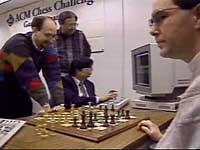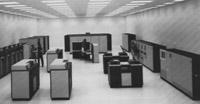Computers and biology: one feeds the other
2003/02/20 Carton Virto, Eider - Elhuyar Zientzia
Every year, in homage to Alan Tuning, a pioneer in the world of computers, the Tuning Conference is held. This year the talk was given by Carol Kovac of IBM. Kovac is the head of the Life Sciences department at IBM and has talked about his topic, the relationship between biology and computers. And, incidentally, it has announced the next IBM computer.
Kovac notes great similarities in the development of both areas. In recent years, he believes that biology is approaching Moore's law. Moore's law predicts that chip capacity increases exponentially and doubles every 18 months. "Bioinformatics require more capacity than ever to computers and therefore to the authors of computers, which will guide the development of computers," said Kovac. Precisely one of its tasks is the search for partners to make investments in this line.

In order to investigate in the field of biology and especially in the genome, IBM will market the Blue Gene computer. This computer will be able to perform 360,000 million operations per second, more than the 500 best supercomputers available today. Blue Gen will have 65,536 processors in pairs that work parallel and will consume 20 Kilowatios per hour. In cost/result ratio, Deep Blue will be 20 times better than the pioneer. Deep Blue, when born, had 256 processors and could operate between 100 and 200 billion. To refer to, conventional computers have a processor, two, four, eight.
Kovac believes that the possibilities of managing and analyzing genetic information with this type of computer will multiply, and that the knowledge that derives from it will boost his work. Customers.
Kovac also addressed the most appropriate format for managing all this information. See it in the XML format of large futures. It is currently widely used on the Internet and by its nature can be very appropriate for genetic data management, has open source and is free.

Gai honi buruzko eduki gehiago
Elhuyarrek garatutako teknologia




